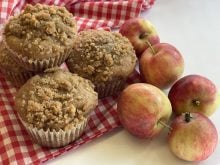Thanks to E.F. of Silver, Man., and B.M. of Langley, B.C., for responding to the Feb. 5, 1998 article on MSG. As you explained, even if MSG is a safe food additive, some people like yourselves have reactions to it.
A fact sheet from Health Canada says “scientists in the health protection branch and in the international community generally agree that no hazard to public health results from the moderate use of MSG under current practices and levels of use.
“However, some individuals who consume MSG may have some unpleasant reactions. These may include a burning sensation, facial pressure and chest pains appearing about 20 minutes after consumption of food containing MSG and disappearing about two hours later. This temporary condition is not harmful. People sensitive enough to be affected may choose to avoid the use of this substance.”
Read Also

Alberta honey business ‘thrives’ despite bumpy beginnings
Thrive Honey showcases its honey production in market where Alberta produces 40 per cent of all honey produced in the country
As B.M. writes, avoiding all use of glutamates can be difficult. When glutamate occurs naturally in protein-containing foods such as meat, fish, milk and many vegetables, it is not listed separately on the label. It is also part of hydrolyzed vegetable protein used in seasoning commercially prepared meat products, soups, sauces, bouillons and gravy mixes.
According to federal regulations in Canada, the presence of MSG or hydrolyzed vegetable protein or hydrolyzed plant protein must be listed on the label. The United States Food and Drug Administration does not allow hydrolyzed vegetable protein to be listed as “natural flavors.”
Remember that the label reflects the contents in decreasing order of proportions. If MSG is near the top of the list, it is one of the main ingredients in the product. In most formulated food, MSG will be found near the bottom of the list.
To avoid excessive use of MSG, we can read labels, use in moderation, avoid adding to commercially prepared soups and question restaurants regarding their use of MSG.
It does not perk up the flavor of sweet foods such as fruits, fruit juice, candy and sweet baked goods, and milk and butter. For those foods that benefit from MSG, such as vegetable and meat dishes, it is more likely to be added. Many prepackaged soups and gravy stocks already contain MSG, so further additions are not necessary.
Restaurant soups sometimes contain higher levels of MSG than those prepared commercially for retail sale. Sensitive persons might avoid soup as a first course or eat soup with bread or crackers as these may lessen the effects of MSG. Also people sensitive to MSG should choose meal items carefully when eating out.
MSG information
- A book on this topic, In Bad Taste: The MSG Syndrome, by George Schwartz and published by Health Press, 1988, is available at
libraries.
- The national office for the Allergy Foundation of Canada is located at Box 1904, Saskatoon, Sask., S7K 3S5. Phone 306-652-1608. The contact person is Sandy Woynarski.
- The Allergy and Asthma Information Association has chapters across Canada. The national office is at 30 Eglinton Ave. West, Suite 710, Mississauga, Ont., L5R 3E7. Phone 905-712-2242, fax 905-712-2245.
- Health Canada website: www.hwc.ca; phone 416-973-1447; fax: 416-973-7794.
Pork sausage making
Dear TEAM: You always seem to have a large number of recipes and we would like to know if you have a book on sausage making with pork? If you do not have one, could you please inform us where we can get one of these books? – D.P., Ste. Anne, Man.
Dear D.P.: There are books available for sausage making, and in the books I have seen, pork is often the meat used. For copies you could try:
- Manitoba Pork at 204-233-4991.
- Your butcher. For example, Bill McKillop, our meat cutter has a couple of books on sausage making, as well as fact sheets and recipes from his meat-cutting classes.
- Book stores or the public library.
I found the following three books at our library. If your library does not have these books, you can request them from other libraries in Canada, or even outside Canada, by using the interlibrary loan service. Ask about this loan service at your library.
Th¹e Sausage-Making Cookbook, by Jerry Predika, published by Stackpole Books, 182 pages, 1983.
As well as telling how to make sausages, this book outlines the history of sausage making, which was a way of preserving meat before refrigeration, types of casings and grinders used over the years, and more than 230 recipes.
Many of the recipes use pork as the main meat, with beef, veal, venison and chicken also used. Included are the best old-world traditions and family-guarded secrets for making every kind of sausage imaginable – Scottish haggis, Hungarian kolbasz, Polish kielbasa and Mexican chorizo. The author describes sausage making as “a simple-to-learn kitchen craft” and also that “getting started is easy and inexpensive.”
I now have the desire to make sausages, after reading this book.
Home Sausage Making, by Charles G. Reavis, a Garden Way Publishing Book, 168 pages, 1994.
This book has easy-to-follow instructions on making your first batch, along with the equipment and ingredients needed. Recipes for making a wide variety of sausages, as well as recipes that use sausages as one of the ingredients in the dish, are part of this book. A wide variety of meats including pork, poultry, fish and wild game are used in the recipes. Game sausages include bear, bison, boar, dove, duck, elk, goose, moose, opossum, squirrel, woodchuck, venison and rabbit. Health concerns are addressed. When making our own sausages we can control what goes into them. The conditions under which they are made can be as clean and wholesome as you care to make them.
Hot Links and Country Flavors, by Bruce Aidells and Denis Kelly, published by Random House of Canada, 380 pages, 1990.
Sausages from the different areas of the United States are featured, including the south, Louisiana, West Coast and Midwest.
At the beginning of each chapter you’ll find recipes for making each of the regional sausages. Most of the recipes are about how to use sausage, so the sausages could be homemade or purchased.
There is a good section on making sausage in the home kitchen, stuffings and extras.
















